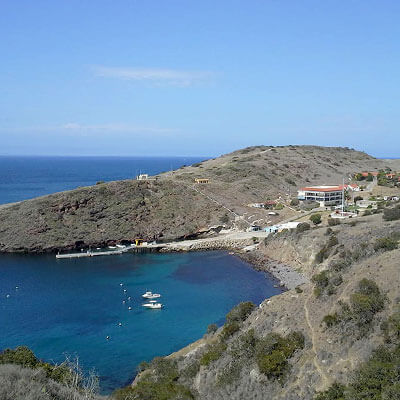GIST in the Military: Using Program Learnings on the Job
We’re celebrating our student and alumni veterans by sharing stories about their geospatial work in the military and experiences in the GIST programs.
Kurtis Eisenhuth is an Army veteran and current student in the Master of Science in Geographic Information Science and Technology program. Eisenhuth balances his studies with a full-time job as a GIS analyst on Vanderbilt University’s Facilities Information Services team. Here he shares the tools he’s learning in the program, why he chose USC and his thesis plans.
Read our other recent Q&A with Air Force veteran and graduate certificate and M.S. in GIST program alumna María Leasure.
View our previous military student and alumni Q&As.
Request Brochure
Fill out the information below to learn more about the University of Southern California’s GIS Graduate Programs and download a free brochure. If you have any additional questions, please call 877-650-9054 to speak to an enrollment advisor.
How did you get involved with geospatial work in the military?
My MOS (Military Occupation Specialty) in the Army was infantry, but I was lucky enough to get the opportunity to try out for a long-range surveillance unit based out of Fort Bragg early on in my career.
There was really no software to conduct spatial analysis at our disposal other than Blue Force Tracker and TigerNET, but I did create map layers for mission planning aids called modified combined obstacle overlays (MCOOs). They consisted of a paper base map taped to a surface in the briefing area, with clear plastic overlays taped all around it. The overlays were created for water bodies/depressions/areas of highest elevation; roads and man-made structures; recent enemy activity; and a primary and alternate route layer, which included various mission-related locations such as infiltration/exfiltration points, objectives, hide/surveillance sites and medevac locations. The analysis of the preceding layers drove what became the route, or mission, layer. The viewer could flip each overlay onto the base map much like a user would add layers in GIS.
How do you use GIS in your current role?
I use GIS to maintain facility, surface, asset and utility data for Vanderbilt University’s Facilities Information Services team. I am responsible for ensuring the accuracy of asset and utility data through interdepartmental communication, research and field checks, as well as collecting and analyzing spatial data to create deliverables that aid in the campus planning and construction process. The majority of GIS use in my current role is for creating, editing or providing data for current campus maps and applications.
Why did you select the University of Southern California M.S. in Geographic Information Science and Technology program among others that you may have been considering?
I did online research before reaching out to my undergraduate advisor for advice. USC’s GIS master’s program was considered the best in the country. My advisor gave me the same information, saying that USC had a really great program, which is why I (thankfully) decided to apply.
What has the online learning experience been like for you?
Each class has been different, but in general, I’ve really enjoyed the online learning experience. In my first semester, it took me a little while to get used to Blackboard, but all of the online resources have been fairly intuitive and easy to navigate. That being said, online learners should expect to be proactive and focus on time management in order to keep up with the course work.
How have your experiences been with faculty, staff and fellow students?
Overall, my experiences with staff have been great. And all of my interactions with faculty and fellow students have been awesome! Everyone is motivated, responsive and really just makes me feel proud to be part of the program.
How has the program benefited you?
The explicit use of ArcGIS Pro in every class has been a great benefit to me, considering I mainly use ArcMap in my current role. We will be migrating to Pro at work in the near future, so having this working knowledge of the software will be extremely helpful. Understanding how to integrate Python in my current workflows is also a huge benefit for many of my time-consuming database management tasks.
What knowledge and skills have you acquired that you find especially valuable?
Integrating Python with Jupyter Notebooks, sharing layers/tools on ArcGIS Online and creating Story Maps are a few skills I’ve picked up that are especially valuable to me in my current role, although essentially everything I’ve learned is beneficial.
What has been one of your favorite GIST projects?
I’m particularly excited about my thesis, for which I am hoping to characterize areas where punk music began. I plan to create a web-based application that shows various aspects of the research topic for users to explore.
What would you like others to know about this program?
Something that people should definitely know is that you can complete the program AND work full-time. As long as you meet assignment deadlines, you can work around your schedule to complete coursework.
About USC’s GIS Graduate Programs
The University of Southern California offers a comprehensive selection of GIS programs, including GIS master’s degrees and GIS graduate certificates. Click on the programs below to learn about our leading geographic information science education.
GIS Master’s Degrees
- Master of Science in Geographic Information Science and Technology
- Master of Science in Human Security and Geospatial Intelligence
- Master of Science in Spatial Data Science
- Master of Science in Spatial Economics and Data Analysis
- Master of Arts in Global Security Studies
GIS Graduate Certificates


